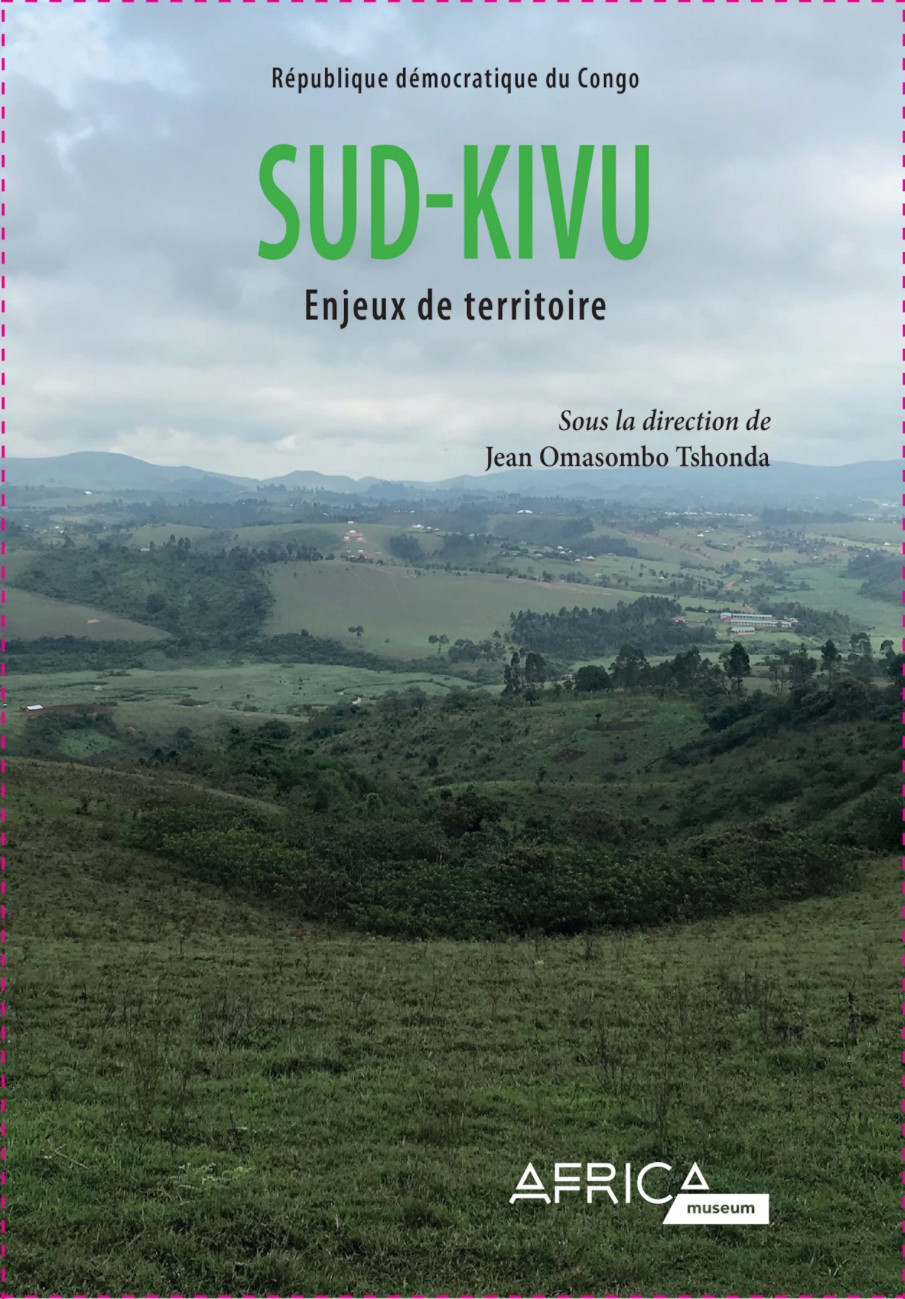RMCA publications
Sud-Kivu. Enjeux de territoire
Le second tome de cette monographie se consacre davantage à l'évolution sociopolitique du Sud-Kivu comme territoire étatique. La conflictualité marque durablement son évolution depuis l'indépendance du pays. D'abord, c'est là que partit la révolte des Lumumbistes dits Simba dont les groupes de résistances armées s'établirent localement pendant plus de vingt ans. Puis, sur base de la question au départ rampante de l'identité autour de la présence des Banyarwanda, une guerre de conquête des territoires s'y est installée voilà déjà trois décennies. Une situation favorisée à la fois par la position géopolitique frontalière dans une région continuellement trouble et les effets cumulés liés à la gestion du pays par différents pouvoirs politiques successifs.
Sur tous ces sujets, les lecteurs trouveront une information dense et contrôlée, puisée dans des sources crédibles. Aucun sujet n'est éludé, le traitement va jusqu'aux détails sur des points sensibles et controversés. Si ce double ouvrage élaboré comme une chronique peut contribuer à jeter un éclairage sur la façon dont le « territoire », l'« identité » et le « pouvoir » se sont croisés et continuent à trimarder dans la province du Sud-Kivu, son ambition aura été largement atteinte.
***
Het eerste deel van dit boek gaat in op de natuurlijke omgeving, de bevolking, de economische exploitatie en de politiek-bestuurlijke organisatie van Sud-Kivu. Door ze aan elkaar te koppelen, zien we hoe deze provincie in de loop van de geschiedenis een broeihaard en oorzaak van conflict is geworden. Met zijn 185 bevolkingsgroepen, 5 sectoren en – vooral – 18 chefferies – dit zijn sociaal-culturele en politieke ruimtes met erfelijke etnische macht –- blijft Sud-Kivu (meer dan Noord-Kivu met 95 bevolkingsgroepen, 7 sectoren en 10 chefferies) gekenmerkt door een pluraliteit van lokale identitaire entiteiten. Vandaar de interesse om de contouren van gisteren en vandaag te schetsen van de lokale ruimtes die bekendstaan als Bushi, Buhavu, Butembo, Bulega, Buvira, Bufuliru, Ubembe, enz. Ondanks het grote belang van de volksverkiezingen met zijn manier van machtsverdeling die er zich ontwikkelt, neemt de provincie, vanuit haar hoofdstad Bukavu, haar toevlucht tot het sociologische begrip ‘familie' (verdeeld tussen een ‘grote' en een ‘kleine' familie). In deze familie halen de belangrijkste oorspronkelijke politieke leiders hun legitimiteit zowel op nationaal als provinciaal vlak. Met een tiental geografisch en cultureel vastgelegde etnische groepen (‘stammen') reorganiseerde het Belgische koloniale bestuur de gevonden gebieden door een aantal van hun herkenningspunten te doen wankelen en zo alleszins zijn overheersing te laten gelden, maar het was niet de bron van de in wezen nieuwe identiteiten.
Het tweede deel van deze monografie richt zich op de sociopolitieke ontwikkeling van Sud-Kivu als staatsgebied. Sinds de onafhankelijkheid van het land wordt zijn ontwikkeling voortdurend gekenmerkt door conflicten. In de eerste plaats begon hier de opstand van de Lumumbisten, de zogenaamde Simba, wiens gewapende verzetsgroepen zich gedurende meer dan twintig jaar in het gebied vestigden. Vervolgens, op basis van de aanvankelijk sterk opkomende identiteitskwestie rond de aanwezigheid van de Banyarwanda, ontstond er drie decennia geleden al een territoriale oorlog. Een situatie die in de hand werd gewerkt door zowel de geopolitieke ligging op een grenslijn in een steeds onrustig gebied als de cumulatieve effecten van het beheer van de staat door opeenvolgende politieke machten.
Op al deze onderwerpen wordt op een diepgaande en gecontroleerde manier ingegaan en de informatie komt uit geloofwaardige bronnen. Geen enkel onderwerp wordt uit de weg gegaan en gevoelige en controversiële thema's worden zeer gedetailleerd behandeld. Als deze tweedelige kroniek kan helpen om licht te werpen op de manier waarop ‘territorium', ‘identiteit' en ‘macht' elkaar blijven beïnvloeden in de provincie Sud-Kivu, dan is het doel meer dan bereikt.
***
The first volume of this work focuses on the natural environment, settlements, economic exploitation, and political-administrative organisation of Sud-Kivu. Linking them together reveals how history took shape in a province that has become a site and cause of conflict. With its 185 groupings, 5 sectors and, above all, 18 chiefdoms – socio-cultural and political spaces with hereditary ethnic power – Sud-Kivu is even more marked than Nord-Kivu (with its 95 groupings, 7 sectors and 10 chiefdoms) by the existence of a plurality of local identitarian entities. This merits addressing the former and present contours in the local areas known as Bushi, Buhavu, Butembo, Bulega, Buvira, Bufuliru, Ubembe, etc. Although popular elections are gaining ground and their mode of power distribution is taking root, the province, from its capital Bukavu, uses the sociological notion of ‘family' (shared between a ‘large' and a ‘small' one), from which the main original political leaders draw their legitimacy at both national and provincial levels. To establish its domination, the Belgian colonial administration reorganized spaces to shake up the points of reference of around ten geographically and culturally fixed ethnic groups, but this was not behind the emergence of essentially new identities.
The second volume of this monograph focuses more on the sociopolitical evolution of Sud-Kivu as a state territory. Conflict has had a lasting impact on its evolution since the country's independence. First, the revolt of the so-called Simba Lumumbists, whose armed resistance groups established themselves locally for more than twenty years, started there. Then, an identitarian question crept around the presence of the Banyarwanda, ultimately leading to a war of territorial conquest that has gone on for three decades now. This situation is favoured both by its location near the geopolitical border of a continually troubled region and the cumulative effects of national leadership helmed by a succession of different political powers.
Readers will find dense and verified information, drawn from credible sources, on these topics. No subject is avoided, and sensitive and controversial points are examined. If this twin volume, written as a chronicle, can help shed light on the way in which ‘territory', ‘identity' and ‘power' have intersected and continue to roam in the province of Sud-Kivu, its ambition will have been largely achieved.
 Freely available at this link
Freely available at this link